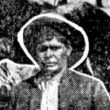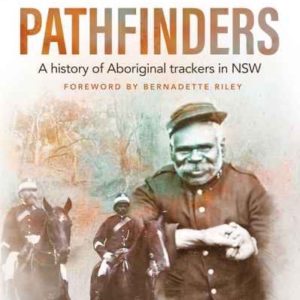Loading map...

The police station at Obley, a rough bush structure, was first built in 1866 and staffed by two mounted constables and an unnamed tracker [ref]Medley, Coleen: Obley on the Little River.[/ref]. In December, the tracker successfully pursued James Auberry who was wanted for stealing sheep and fleeces from a number of local properties including Balderogery, Rocky Ponds and Yullundry [ref]NSW...
Learn More ►James Nerang, or Jimmy as he was often known, worked as a tracker in the central-west of NSW around the turn of the 20th century. He took a prominent part in tracking Jimmy and Joe Governor after the massacre at Breelong in 1900. He was stationed at Dubbo in January 1902 when he gave evidence identifying Charles Ryan, an Aboriginal...
Learn More ►
 This website explores the history of Aboriginal trackers in NSW from 1862 when the current NSW Police Force was established through to 1973 when the last tracker, Norman Walford, retired. You can read about the lives of individual trackers and some of the incredible tracking feats they...
This website explores the history of Aboriginal trackers in NSW from 1862 when the current NSW Police Force was established through to 1973 when the last tracker, Norman Walford, retired. You can read about the lives of individual trackers and some of the incredible tracking feats they...

There were over 200 NSW police stations that employed Aboriginal trackers between 1862 and 1973. Many were concentrated in the central-west and north-west of the state, the agricultural and pastoral heartland of NSW. This is because one of the main jobs of trackers was to pursue sheep, cattle and horse thieves. Trackers sometimes lived in small huts out the back...
Learn More ►
Pathfinders book Pathfinders, A history of Aboriginal trackers in NSW, written by Dr Michael Bennett and published by NewSouth, is now available from all good bookstores. Click on the link below to order your copy. https://www.abbeys.com.au/book/pathfinders-a-history-of-aboriginal-trackers-in-nsw.do Early History Since the beginning of the colony, government agencies, explorers, surveyors and members of the general public called upon the tracking...
Learn More ►